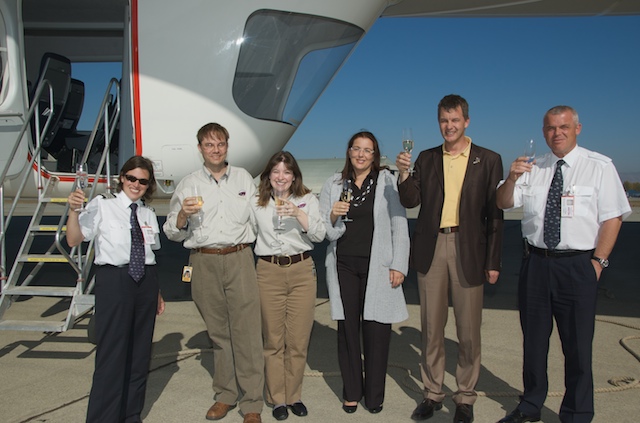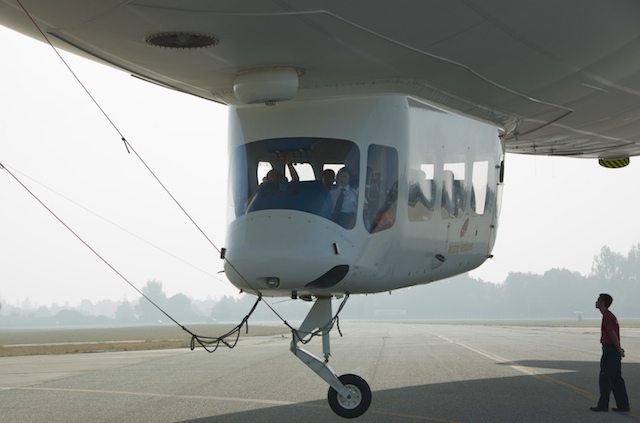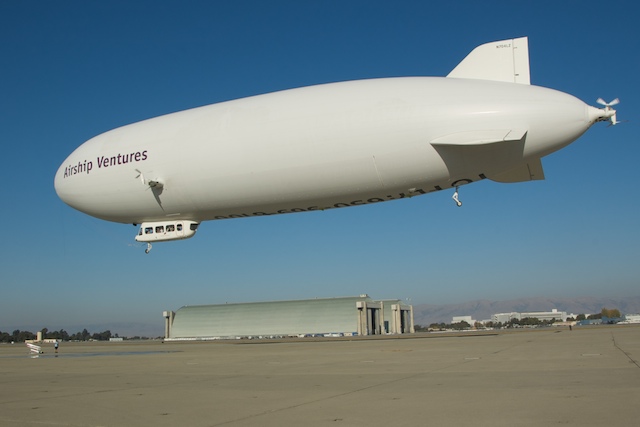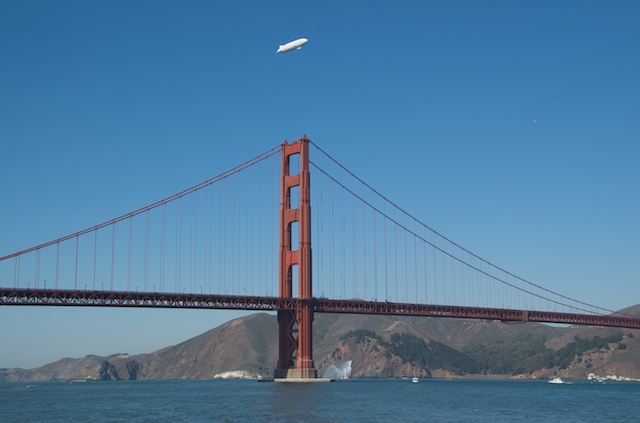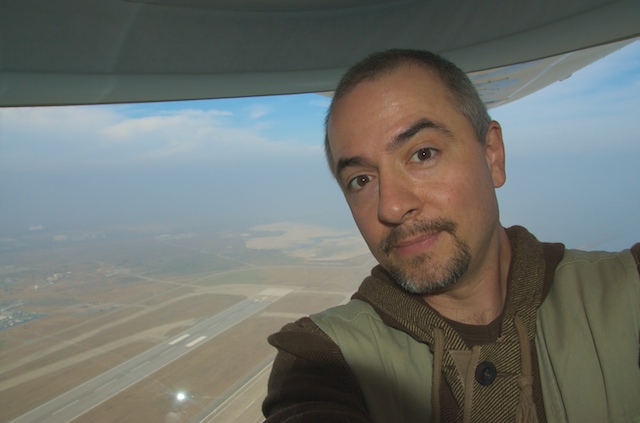The Return of the Zeppelin
And what this means for space tourism
by Sam Coniglio
Moffett Field, near San Jose, California, US -- On Saturday October 25, 2008 an airship flew into San Francisco Bay. Its graceful entrance over the Golden Gate Bridge marked the return of a classic form of travel not seen since before World War II. The Zepplin NT airship, built in Germany by Zepplin Luftschifftechnik GmbH, is a direct descendent of the giant airships which were a familiar sight in the 1920's and 30's.
Using the latest technology in materials and avionics, the Zepplin NT (for New Technology) uses non-flammable helium gas for lift and is covered in a tear-proof multi-layer fabric manufactured by ILC Dover, the same company that makes space suits for NASA .
.
Thanks to the efforts of a Brian and Alex Hall , the husband and wife founders of Airship Ventures, the Bay Area is now home to the only private airship-for-hire service in the United States. Airship Ventures is offering tourist rides for up to twelve passengers around the Bay area, including San Francisco, Monterey Bay, and Napa & Sonoma wine country. They also offer nighttime flights and rent the airship out for corporate functions and special events; flights are available now, and Bay Area trips are $495 for an hour tour.
, the husband and wife founders of Airship Ventures, the Bay Area is now home to the only private airship-for-hire service in the United States. Airship Ventures is offering tourist rides for up to twelve passengers around the Bay area, including San Francisco, Monterey Bay, and Napa & Sonoma wine country. They also offer nighttime flights and rent the airship out for corporate functions and special events; flights are available now, and Bay Area trips are $495 for an hour tour.
It was not difficult for Brian Hall to convince NASA
to convince NASA Ames Research Center director Pete Worden that Airship Ventures should base its operations at the historic Moffett airfield, which is managed by NASA
Ames Research Center director Pete Worden that Airship Ventures should base its operations at the historic Moffett airfield, which is managed by NASA Ames in Sunnyvale, California. "We did our homework about the uses of the field," Brian
Hall
Ames in Sunnyvale, California. "We did our homework about the uses of the field," Brian
Hall said, "and obviously one of them was its original purpose: an airship base. Pete simply said 'I get it. Let's make it so.'"
said, "and obviously one of them was its original purpose: an airship base. Pete simply said 'I get it. Let's make it so.'"
Airship Ventures received its initial funding from a pretty unlikely source: Esther Dyson, investor and computer industry expert. The Halls attended Flight School, Esther Dyson's annual workshop for start-ups and investors in the emerging markets for private air and commercial space travel. During the presentation, Brian told the audience of potential investors he was "going to give you an altitude adjustment." And he did. On October 25th, several of those investors got to ride in their investment at one thousand feet up as they gracefully toured San Francisco Bay.
How can the space tourism industry learn from the return of airships? Repetition of successful flights increases the public's comfort level that this new industry is safe and practical. Private space traveler Richard Garriott's safe return from the International Space Station last week reminded the media that space tourism is alive and well despite the economic upheavals in the US and abroad.
last week reminded the media that space tourism is alive and well despite the economic upheavals in the US and abroad.
The allure of both airship travel and space tourism is sheer novelty. There will always be the adventurer who seeks a new thrill, which if done often enough becomes a trend, and then becomes... almost commonplace. Novel businesses diversify to keep pace of customer interests and an industry is formed. Let's wish Airship Ventures best of luck.
For more information about Airship Ventures, click here.
Using the latest technology in materials and avionics, the Zepplin NT (for New Technology) uses non-flammable helium gas for lift and is covered in a tear-proof multi-layer fabric manufactured by ILC Dover, the same company that makes space suits for NASA
Thanks to the efforts of a Brian and Alex Hall
It was not difficult for Brian Hall
Airship Ventures received its initial funding from a pretty unlikely source: Esther Dyson, investor and computer industry expert. The Halls attended Flight School, Esther Dyson's annual workshop for start-ups and investors in the emerging markets for private air and commercial space travel. During the presentation, Brian told the audience of potential investors he was "going to give you an altitude adjustment." And he did. On October 25th, several of those investors got to ride in their investment at one thousand feet up as they gracefully toured San Francisco Bay.
How can the space tourism industry learn from the return of airships? Repetition of successful flights increases the public's comfort level that this new industry is safe and practical. Private space traveler Richard Garriott's safe return from the International Space Station
The allure of both airship travel and space tourism is sheer novelty. There will always be the adventurer who seeks a new thrill, which if done often enough becomes a trend, and then becomes... almost commonplace. Novel businesses diversify to keep pace of customer interests and an industry is formed. Let's wish Airship Ventures best of luck.
For more information about Airship Ventures, click here.

